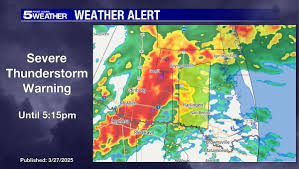Understanding Thunderstorm Warnings: What You Need to Know

Introduction
As climate change leads to increasingly volatile weather patterns, thunderstorms have become more frequent and severe across the United Kingdom. Thunderstorm warnings serve as essential alerts to protect residents from potential hazards such as heavy rain, strong winds, and lightning strikes. Being prepared and understanding the implications of these warnings is vital for personal safety and public awareness.
Current Situation and Meteorological Context
In recent weeks, the UK Met Office has issued several thunderstorm warnings across various regions, particularly in the Midlands, south-east, and northern England. These warnings are primarily due to a collision of warm, moist air masses and cooler fronts, creating unstable atmospheric conditions ripe for severe weather. According to the latest reports, predicted thunderstorms could produce rainfall amounts exceeding 50mm in some areas within a short period, posing risks of flash flooding.
The Met Office categorizes thunderstorm warnings into three levels: Yellow, Amber, and Red. A Yellow warning signifies that thunderstorms are expected to occur, which could lead to some disruptions. Amber indicates that more severe thunderstorms are likely, with a potential for significant disruption to travel and services. A Red warning, the highest alert level, suggests an imminent risk of life from extreme weather conditions. It is crucial for residents to pay close attention to these classifications to understand the severity of the potential threat.
Safety Precautions and Recommendations
During a thunderstorm, it is important to follow specific safety guidelines to minimise risks. Residents are advised to stay indoors whenever possible, avoiding windows and doors that could be broken by strong winds or hail. Avoiding outdoor activities, particularly those that involve using electrical devices or being near tall structures, can also reduce the risk of being struck by lightning. Furthermore, motorists are encouraged to exercise caution, as roads may become hazardous due to heavy downpours and poor visibility.
Emergency services are on standby to respond to incidents caused by extreme weather, and residents are encouraged to be proactive by preparing emergency kits and having a plan in place should evacuation be necessary. Staying informed through trusted sources like the Met Office and local news outlets will ensure that individuals and families remain aware of changing conditions and necessary precautions.
Conclusion
Thunderstorm warnings are critical tools in safeguarding communities from severe weather impacts. As UK residents face more frequent and intense thunderstorms, understanding these alerts and taking necessary precautions will become increasingly important. Preparedness can save lives and reduce damages, allowing individuals to navigate the evolving landscape of weather-related challenges safely. As the season progresses, it remains essential for everyone to stay informed and take thunderstorm warnings seriously.








